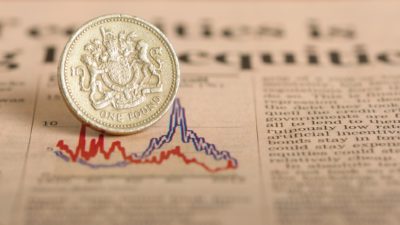Small challenger banks are delivering superior returns and have better cost efficiency than many of their bigger rivals. We will take a look at OneSavings Bank (LSE: OSB), a challenger bank which has a strong focus on mortgage lending, and see how its financial performance compares to Lloyds Banking Group (LSE: LLOY) and Virgin Money (LSE: VM).
Return on equity
The return on equity (ROE) is a measure of the amount of profit generated for every £1 of equity invested. This makes it an important measure of a bank’s performance because the ROE for banks is often seen as a competitive advantage by investors.
| Return on equity (%) | |
|---|---|
| OneSavings Bank | 31 |
| Lloyds | 3.7 |
| Virgin Money | 6.7 |
A bank’s ROE needs to be in excess of its cost of equity in order for the bank to deliver value to shareholders. Therefore, it is better for a bank to have a higher ROE and this usually means the banks with higher ROEs trade with higher price to book ratios.
In the first half of 2015, the ROE for OneSavings Bank is far higher than that of Lloyds Banking Group and Virgin Money. We should note that Lloyds’s underlying ROE was 16.2%, if one-off legacy costs, including a £1.4 billion PPI provision charge and £660 million charge relating to the disposal of TSB, were excluded. But that still leaves OneSavings Bank’s ROE almost twice as high as Lloyds’s.
Cost to income ratio
The cost to income ratio is an important financial metric for banks because it, too, is seen as a measure of a bank’s competitive advantage. Banks with lower cost to income ratios are generally considered to be safer and stronger banks as their greater profit margins means they can absorb shocks more easily.
| Cost to income ratio (%) | |
|---|---|
| OneSavings Bank | 26 |
| Lloyds | 48.3 |
| Virgin Money | 62.2 |
Here, OneSavings Bank has much lower operating costs relative to the banking revenues it earns from extending loans and earning fees. Although Virgin should be able to benefit from more economies of scale than OneSavings Bank, it suffers from a high cost structure and a less profitable mortgage book.
Net interest margins
Net interest margin is a measure of the spread in the average interest rate it earns from extending loans and the interest cost of its funds. It is, therefore, a measure of the profitability of the bank’s lending activities.
| Net interest margins (%) | |
|---|---|
| OneSavings Bank | 3.05 |
| Lloyds | 2.62 |
| Virgin Money | 1.65 |
Low net interest margins is partly the cause of the higher cost efficiency ratios suffered by Virgin Money. On net interest margins, Lloyds does not do too badly, but OneSavings Bank is still more profitable on this metric. With one of the largest branch networks and the most retail customers, Lloyds has been able to reduce the interest it offers to depositors and offer loans on attractive terms.
Conclusion
It’s interesting to see that Virgin Money, a mid-sized challenger bank, is not doing as well as Lloyds Banking Group. Unlike the other ‘big four’ banks, Lloyds has refrained from international expansion and this has enabled it to gain more of the cost savings from local economies of scale. So, although it is not nearly as profitable as the smaller challenger banks, it is probably the most profitable of the larger banks.
OneSavings Bank comes out top with all three financial metrics, and it also seems to offer the strongest growth prospects. As OneSavings Bank grows, its cost efficiency could benefit further from economies of scale and its return on equity would likely improve with increasing leverage.
There are near-term headwinds affecting OneSavings though. The proposed introduction of an 8% Bank Corporation Tax Surcharge would eat into the earnings of smaller banks, reducing the amount of capital available to support further growth. Furthermore, competition has been intensifying in the mortgage lending sector, particularly in the SME and buy-to-let mortgage market that OneSavings Bank focuses on.







